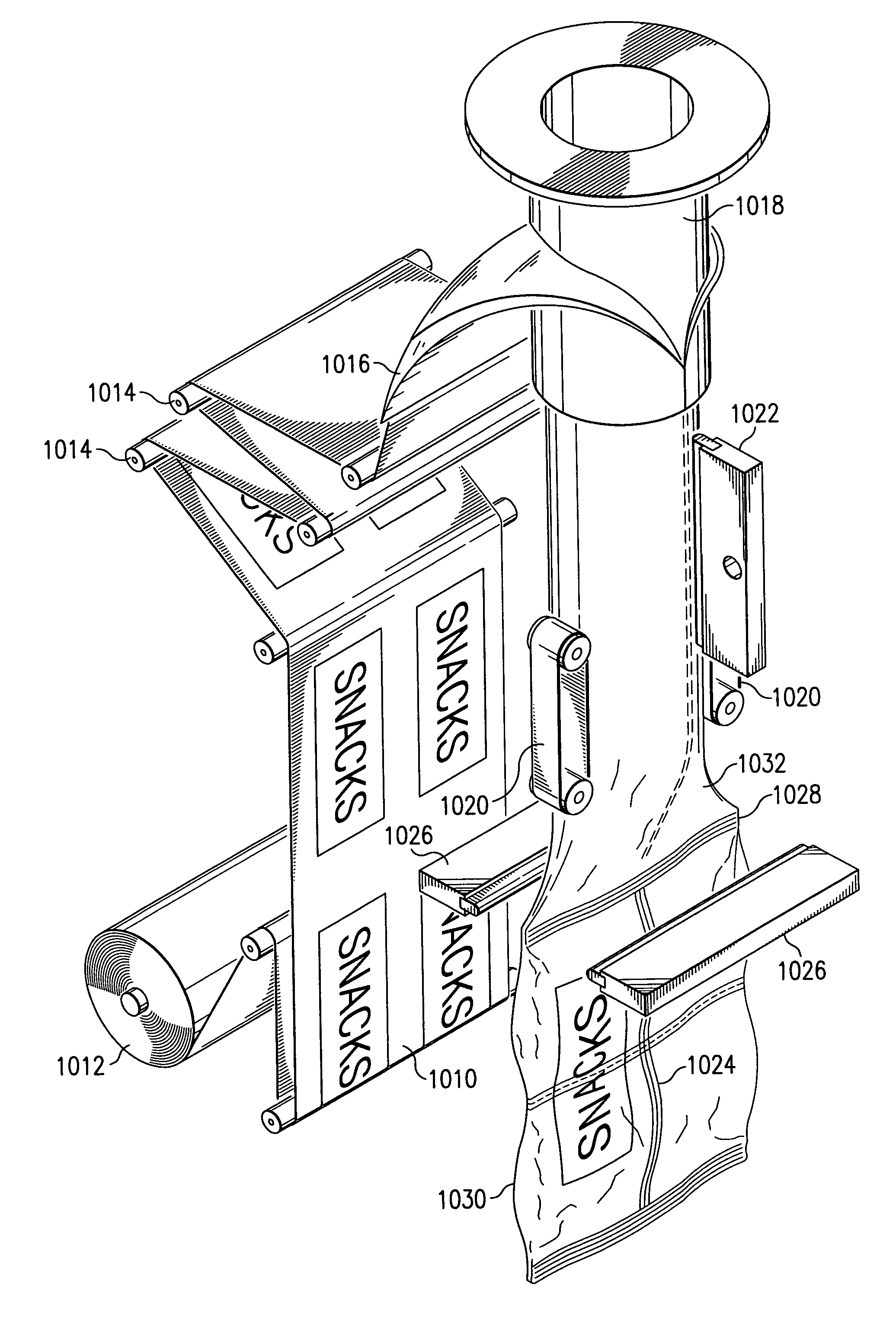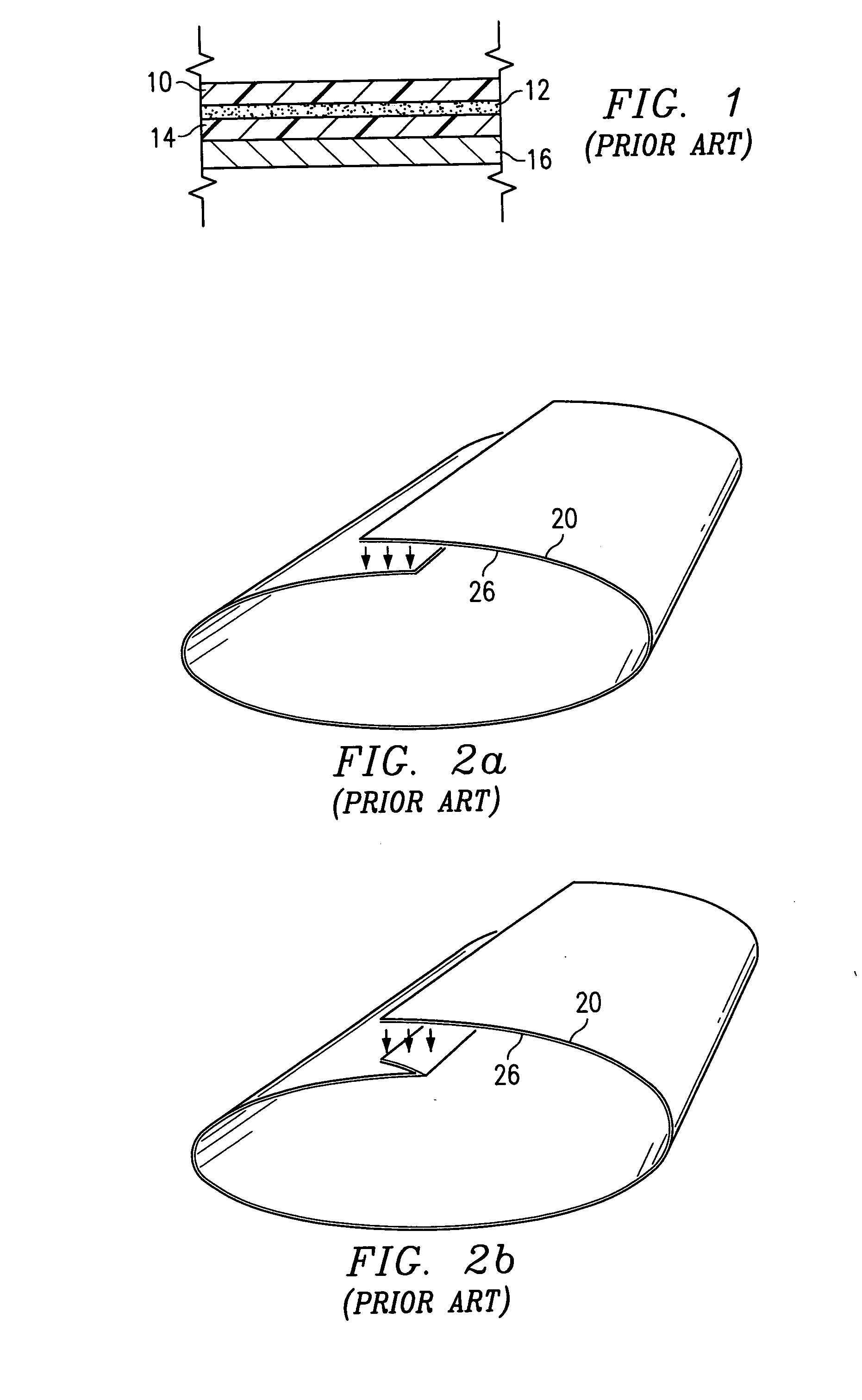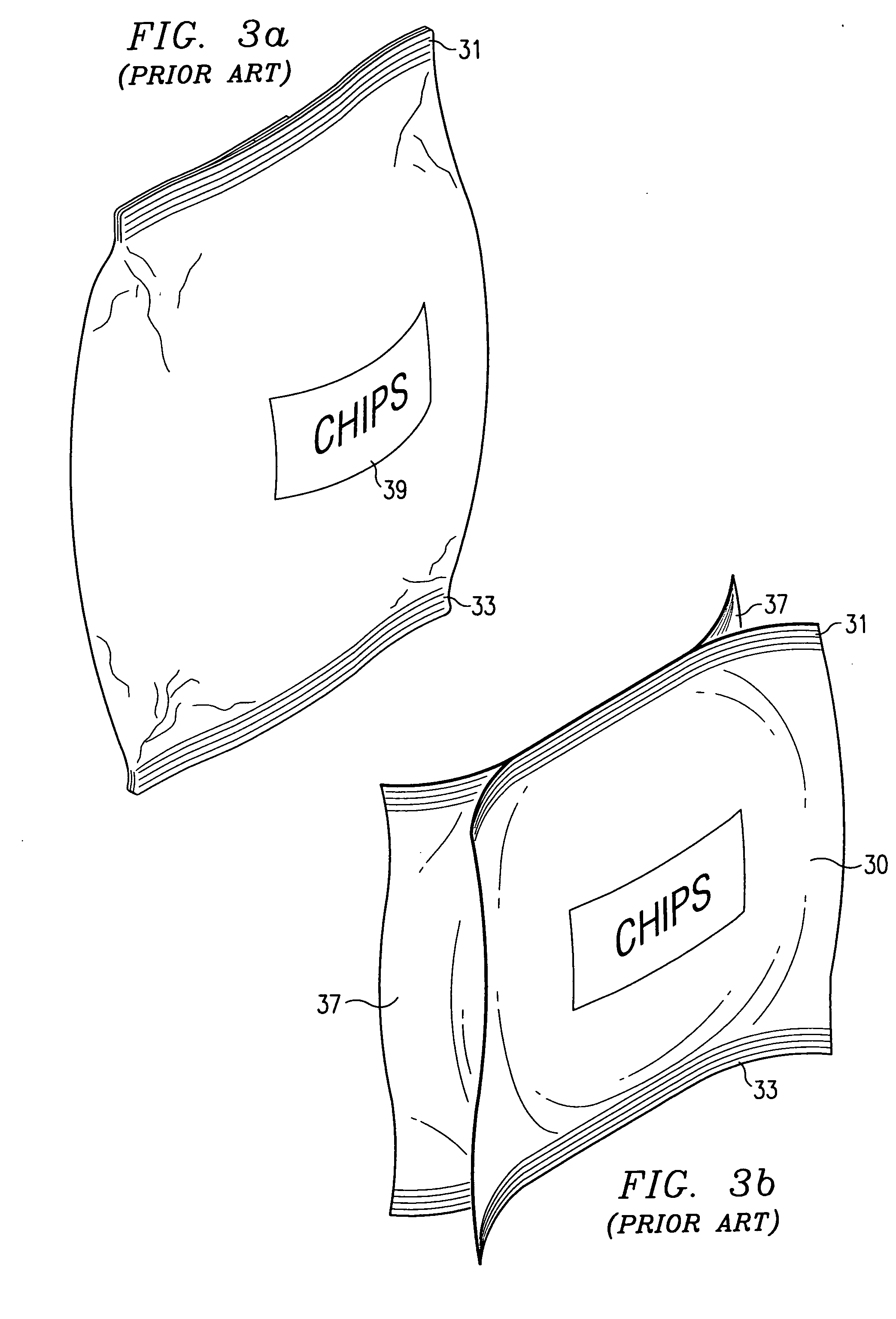The form, fill and seal machines are quite expensive, in the range of $250,000 each, but pay for themselves easily when compared to the cost of pre-formed bags and the machinery to fill them.
Because of the narrow, single edge base on the package shown in FIG. 3a formed by the bottom transverse seal 33, such prior art packages are not particularly stable when standing on one end.
Manufacture of such horizontal stand-up pouches, however, does not involve the use of standard vertical form, fill, and seal machines but, rather, involves an expensive and relatively slow 3-piece construction using a pouch form, fill, and seal
machine.
The requirement that such horizontal stand-up pouch be constructed of three pieces results in a package that is significantly more expensive to construct than a
standard form and fill vertical flex bag.
Further disadvantages of using horizontal stand-up pouches include the initial capital expense of the horizontal stand-up pouch machines, the additional gas flush volume required during packaging as compared to a vertical flex bag, increased down time to change the bag size, slower bag forming speed, and a decreased bag size range.
However, the prior art method of making a flat bottom bag has a number of significant drawbacks.
For example, the capital expense for modifying the vertical form, fill, and seal
machine to include the moving triangular-shaped devices is approximately $30,000.00 per
machine.
The addition of all of the
moving parts required for the triangular-shaped devices to move in and out of position during each package formation cycle also adds complexity to the vertical form, fill, and seal machine, inevitably resulting in maintenance issues.
While the marketing idea of multi-packs may be simple, the translation of that idea to current packaging technology can be more difficult.
However, there are several disadvantages to the '360 application's multi-pack package and method for making the package.
One
disadvantage is that the package 500 requires a special, complex vertical form, fill and seal (VFFS) machine having two feed tubes. FIG. 6a is a front view of the former / delivery tube
assembly of such of a twin-feed VFFS machine, and FIG. 6b is a side view of the former / delivery tube
assembly shown in FIG. 6a. FIG. 7 is a cross-section of the former / delivery tube
assembly taken at point 7-7′ of FIG. 6b, and FIG. 8 is a cross-section of the former / delivery tube assembly taken at point 8-8′ of FIG. 6b.
A twin-feed VFFS having a special former / delivery tube assembly such as that depicted in FIG. 6a has a greater initial
capital cost than a traditional VFFS machine.
Furthermore, such a modified twin-feed VFFS machine requires a substantially wider film stock than traditional VFFS machines.
The use of non-standard film stock and former / delivery tube assemblies undesirably increases the capital and operating costs.
Additionally, no equipment currently exists to make seals wider than 18 inches, severely limiting bag sizes.
Another
disadvantage is that each container of the multi-pack package disclosed in the '360 application has more restrictive extremities than does a pillow pouch (or vertical flex bag), such as that shown in FIG. 3a, formed from a traditional VFFS machine.
Each flat seal flattens the package in the surrounding area, thus decreasing the
available volume within the package.
Printing
graphics and / or text units in such an alternating fashion can require modifications to the printing process and thus undesirably increase costs.
Oriented films are thus more likely to suffer from errant or stray
tears than non-oriented films.
Many prior art perforation knife designs do not produce perforations that are adequate for reliable separation of oriented-film flexible packages along the desired perforation paths.
While the use of certain expensive films, such as
polyester (PET), can improve the
predictability of tearing, it still does not provide a fail-safe solution.
However, Benoit '617 does not describe having any product in each package, but discloses shipping a string of empty packages that may be subsequently filled and separated by tearing a perforation in the packaging film between each package.
Further, Benoit '617 does not disclose use of such packages with a vertical form, fill and seal machine.
However, Dworak '657 does not disclose shipping a connected string of packages, selling such connected string, and allowing consumers to separate packages from the string.
Dworak '657 also does not disclose creating such a string of packages with a vertical form, fill and seal machine.
Rabiea '047 does not disclose filling each bag before a string of bags ships to consumers.
 Login to View More
Login to View More 


